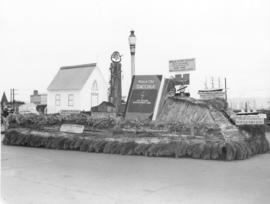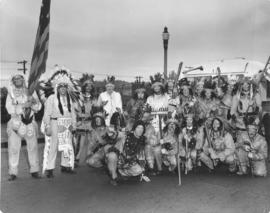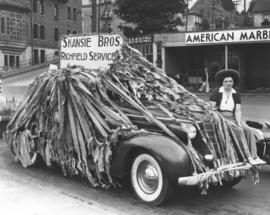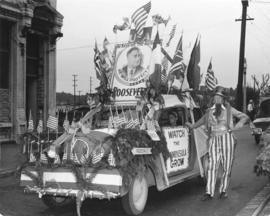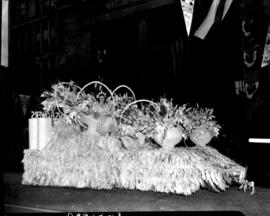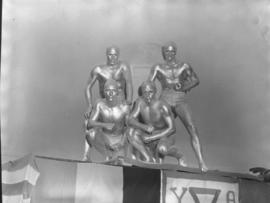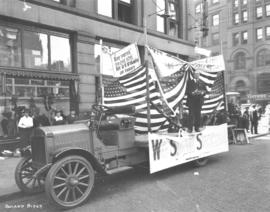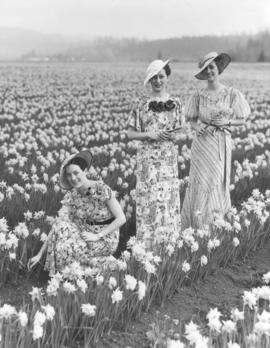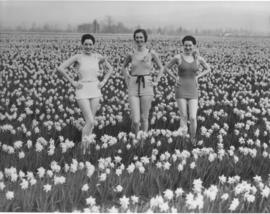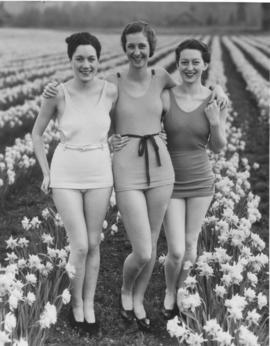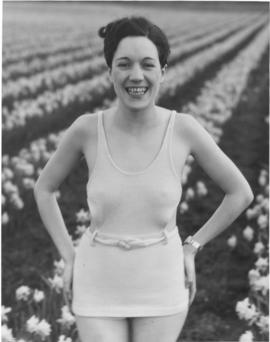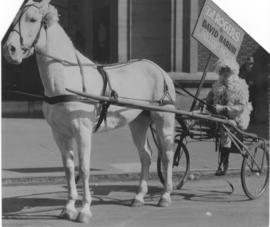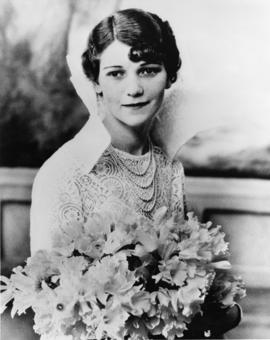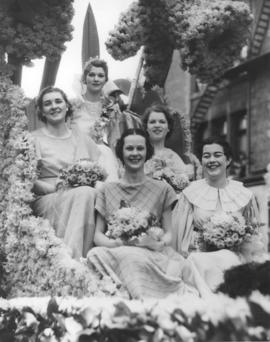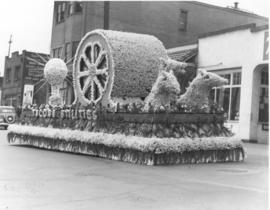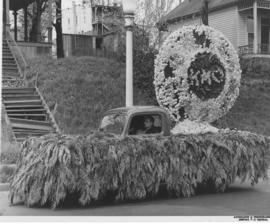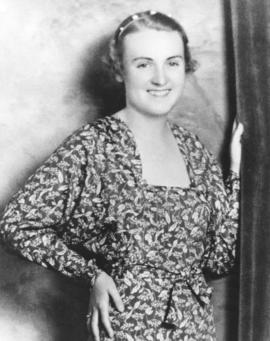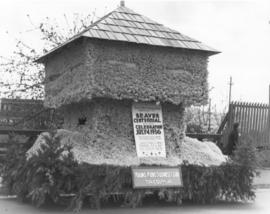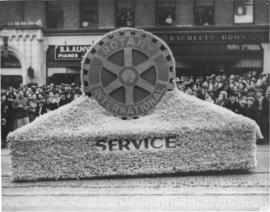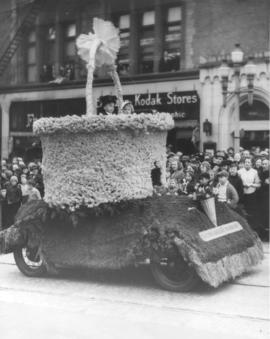- Item
- 1940-07-01
Part of Richards Studio Photographs
Narrows Bridge - McChord Field Parade, Old Tacoma Improvement Club float. Designed by Walt Sutter, the Old Tacoma Improvement Club float was possibly the most original of those entered in the July 1, 1940, celebratory parade. It featured a series of "firsts," replicas of Old Tacoma: first church (St. Peter's Church), first home (Job Carr cabin), first electric power plant, first shipment of lumber, first survey of Puget Sound, and the oldest bell tower in America. Tacoma was celebrating the grand openings of the (first) Narrows Bridge and the country's newest airbase, McChord Field. (T. Times, 7-2-40, p. 1)
Parades & processions--Tacoma--1940-1950; Floats (Parades)--Tacoma--1940-1950; Signs (Notices); Narrows Bridge/ McChord Field Parade;
